Previous Episode
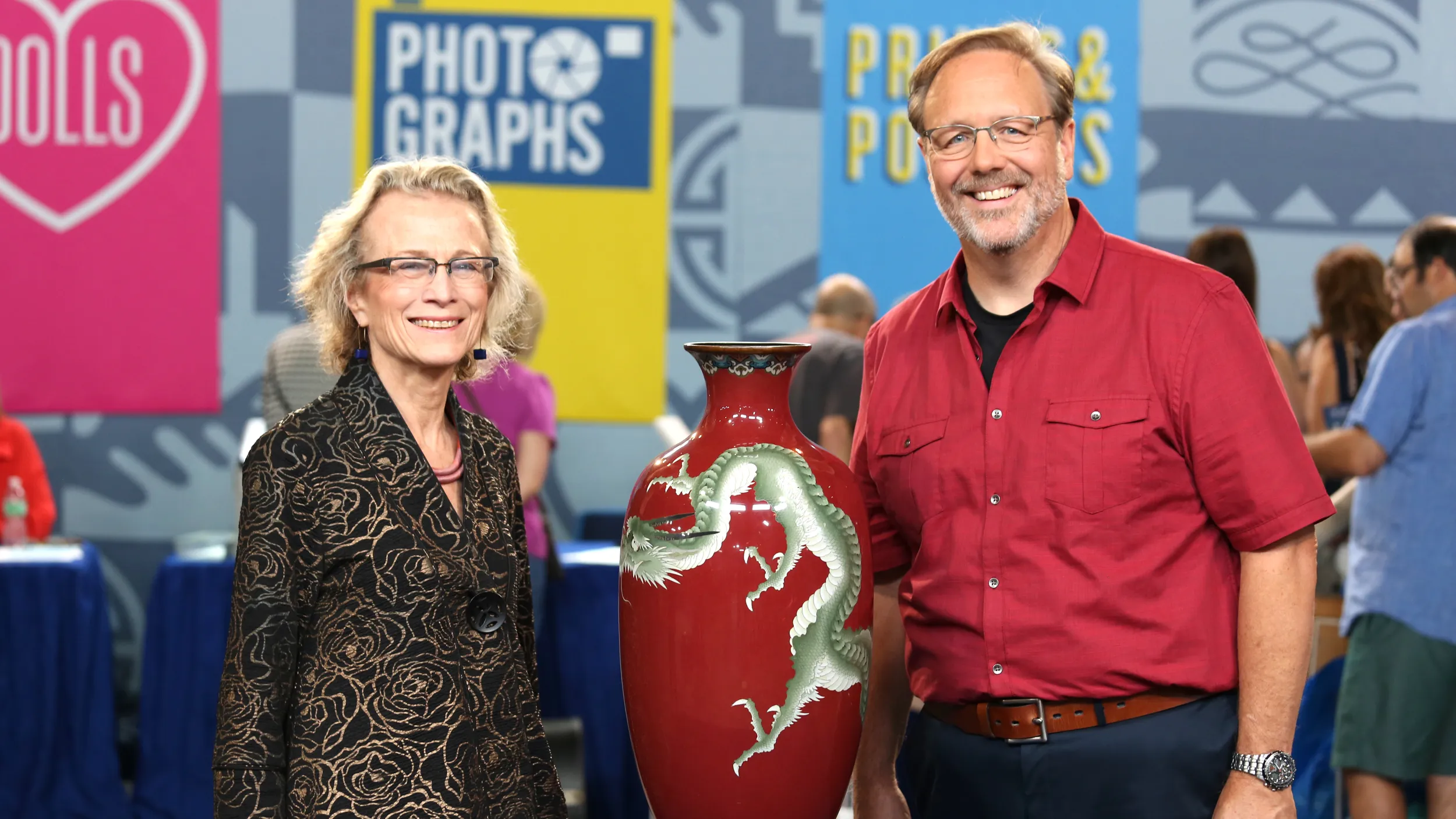
episode
Next Episode
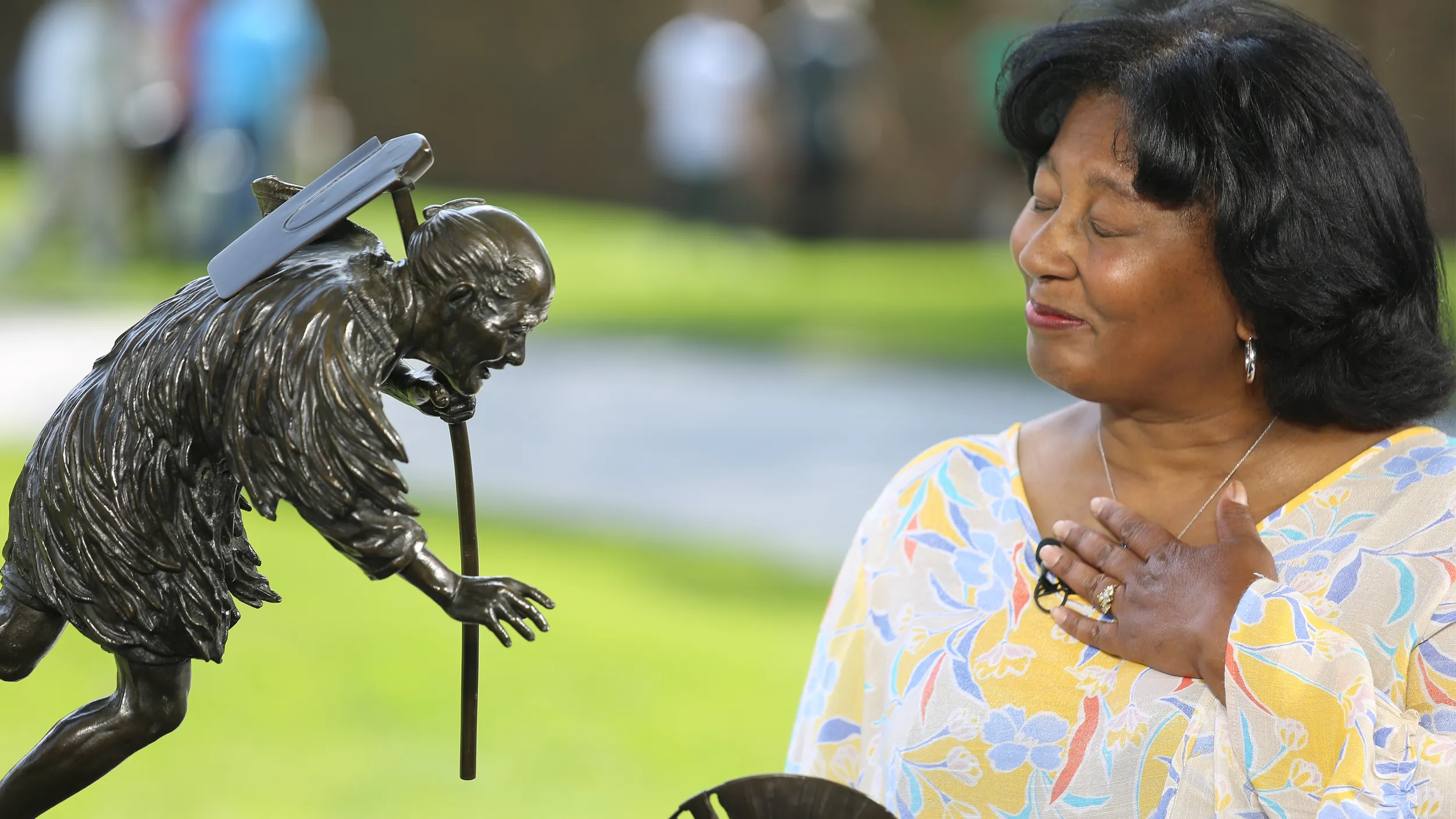
episode
Meadow Brook Hall, Hour 2
Discover Detroit-area items appraised at the historic Dodge-Wilson estate. One is $40,000-
See a groundbreaking season of items appraised in settings that are treasures themselves!
HOST: ANTIQUES ROADSHOW is ready to see the best treasures Michigan has to offer at Meadow Brook Hall.
GUEST: My grandfather, Wally Pipp, played for the New York Yankees, 1921-1922 era.
GUEST: Seriously!
APPRAISER: Seriously.
HOST: This impressive country estate is part of the rich automobile history of the Detroit metro area. Automotive businessman John F. Dodge, and his wife, Matilda, purchased what came to be known as Meadow Brook Farms for $40,000 in 1908. Several years after John's death, Matilda and her second husband, Alfred Wilson, built this grand Tudor Revival mansion, Meadow Brook Hall, completed in 1929. What do our experts think of the treasures we're finding at Meadow Brook? Let's find out.
GUEST: Did you ever see anything like this? She wanted $50, but I got her down to $35. (woman laughing) Do you want to hold it? It's heavy.
APPRAISER: Right now, there's no danger in keeping it in the condition that it's in. It's not going to get worse. But, certainly, don't leave that newsprint in that case. It is a very nice silver-plated trombone.
APPRAISER: So, fire collectors love their helmets. It's one of the main things that they collect. This is what I love is-- to me, this drips age, with that high crown like that. I would say around $150 to $175, okay?
GUEST: About 15 years ago, I had a gentleman to come see me, and he asked me, "Do I collect memorabilia?" And I said, "Yeah." And he said, "Well, I have this Temptations trunk I'd like for you to see." (appraiser chuckles) I asked him, how much did he want for the trunk, and he told me he wanted 500 bucks for it. So I said, "Well, okay, I'll take it."
APPRAISER: Okay, how did he get the trunk?
GUEST: Well, I think he got it from a guy that was at a bump shop, and I guess he was holding it for somebody, and that was about the extent of the story that I know, but he was holding it for someone, and he just decided to help him sell it.
APPRAISER: Got it, got it. Well, that's pretty cool. So obviously, the Temptations are one of the most successful groups out there. And I think Otis Williams, one of the founding members, is still performing.
GUEST: Yes.
APPRAISER: Now, they were known for their harmonies, their vocals, but also their, and their dances...
GUEST: Yes.
APPRAISER: But also their costumes, right?
GUEST: That's right.
APPRAISER: So every, every member would have had a trunk.
GUEST: Right.
APPRAISER: And probably held their funky costumes. So this is a generic, American-made, off-the-rack kind of trunk that would have been customized for them, maybe painted by a band member, maybe a local sign painter. We've seen other members of the Temptations with identical painted trunks.
GUEST: Yes.
APPRAISER: So there's no question that, that it's the same style, same period. And what's great about this is, we can actually even date it a little bit. There is a label from Northwest Orient Airlines here, which has a print date of 1967. So that would put it kind of right in the sweet spot in terms of the Temptations' success. They were the first Motown group to win a Grammy for "Cloud Nine." And there probably isn't anybody on the planet that doesn't know "My Girl," right?
GUEST: Oh, yes. That's one of my favorites, as well.
APPRAISER: So provenance might need to be tied up a little bit more, but I think there's no question that this is identical to the other trunks that we've seen out there.
GUEST: Yes.
APPRAISER: What would be interesting to find is some more period photos to see if any of these are in shots with them traveling. If you could find one that has this specific trunk... (snaps fingers): Then you're golden. In the world of things that belonged to celebrities, we look for things that revolve around, you know, what might be close to them. And for the Temptations, obviously, this is something that was close to them because it would have held costumes, and that was one of their hallmarks, one of their signatures. Just as a great iconic image and as a connection to one of the great Motown groups, I think we have to value it based on just its appeal as an object, and I love it. So you paid, what, $500 for it?
GUEST: 500 bucks for it, yes.
APPRAISER: It's got some issues in terms of condition.
GUEST: Sure.
APPRAISER: But, overall, the paint is actually in great condition.
GUEST: Right.
APPRAISER: Conservatively, in a kind of pop culture auction, you're looking at, I think, somewhere in the $2,000 to $3,000 range.
GUEST: Oh, wow.
APPRAISER: And I might even be pushed to $3,000 to $5,000 on the right day.
GUEST: Okay.
APPRAISER: Because it's just a, it's a great single object.
GUEST: Right.
APPRAISER: The Temptations are still going today. Everything about them is just an American success story.
GUEST: Sure.
APPRAISER: So I'm psyched that you brought it.
GUEST: All right, thank you-- I'm happy to be here.
GUEST: This print was in my grandparents' home in Indianapolis, Indiana, and when I was a little girl, I would see it on the wall in the guest bedroom where I always stayed when I visited my grandparents. And I absolutely loved it, and it was the one thing I wanted to inherit from my grandparents when they died.
APPRAISER: This print, by Gustave Baumann, is titled here, "Grandma Battin's Garden," but it's also known as the "Hoosier Garden."
GUEST: Okay.
APPRAISER: He's a German artist, immigrated to the United States when he was a young man. But in the teens, he lived in Indiana, and he did scenes of homes like this, rustic homes with beautiful gardens. And it's a beautiful example of what he's really known for, which is color woodblock print.
GUEST: Oh.
APPRAISER: This looks like an early proof. Some of the colors are different. Some of the blacks are not in the roof or the sky. So it looks like you have a wonderful artist's proof of a very early, significant Gustave Baumann print. This was printed in, around 1927. Most of these prints were printed in New Mexico, where he later moved, and that's what he's best known for, his New Mexico scenes. But this is a very desirable print because it's a very early print and has such rich color. At auction, I would value this at $15,000 to $25,000.
GUEST: Wow. Really?
APPRAISER: Yes.
GUEST: Wow. That's... I'm not going to sell it, though. I love it. I love it, but that's amazing.
APPRAISER: It was a pleasure.
GUEST: I thought it just had sentimental value.
GUEST: He came with a slipper.
APPRAISER: Oh, yeah, absolutely.
GUEST: And a road, I guess, that he used to walk across.
APPRAISER: Cute little toy-- aw...
GUEST: (laughs)
APPRAISER: Come on, pup. The value is in the $25 range.
GUEST: (laughs): Not $25,000.
GUEST: We got it in Ohio, but we don't know how old it is. We think it's late 1800s to early 1900s, from a carousel.
HOST: Meadow Brook Hall, now a part of Oakland University, was declared a National Historic Landmark in 2012.
GUEST: I brought a pair of earrings that I found at an estate sale. It was the second day, and they were marking everything down, and I saw them, and I said, "Well, I really like them." And I got them for my daughter. I don't think they knew that much about them, except they said they were gold.
APPRAISER: When I looked at them, what I found was, is that they're 14-karat gold, with white gold around the centerpiece there. There's a topaz in the middle, and in the white gold, we have round, brilliant-cut diamonds.
GUEST: Oh, they are diamonds.
APPRAISER: They are, indeed. And they're a beautiful pair. They're from around the 1940s, very retro in style. But I found something more important on there. Did you see that they were signed on the back?
GUEST: I didn't pay much attention.
APPRAISER: Oh, okay.
GUEST: I just liked them, and I didn't pay that much for them, and I thought, "Well, whatever."
APPRAISER: They're just beautiful and you liked them.
GUEST: They're beautiful, and I thought they'd look gorgeous on my daughter.
APPRAISER: They're by a designer named Romain de Tirtoff. His initials are R.T., which in French is Erté.
GUEST: Ah, Erté.
APPRAISER: What I noticed is that they're signed on the back. He was a well-known designer. He designed a variety of different subjects, like decor. He did bottles for Courvoisier. He designed sets for Louis B. Mayer, designed clothing. So he was a very talented artist. He's a Russian-born designer who moved to France. And they still produce his materials up until the late '70s, '80s, and…cause he passed away in 1990. So he had a long, prolific life.
GUEST: He did.
APPRAISER: He was more well-known for his Art Deco designs that he did. But this was right after his Art Deco era. Beautiful pair of earrings. And I'm sure they'll make a great gift for your daughter. Do you remember what you paid for them at the estate sale?
GUEST: Yeah, they were asking $300, and I offered $150, and they took it.
APPRAISER: Oh, wow. That's a great deal.
GUEST: Is that a good deal?
APPRAISER: That's an excellent deal. I believe that if we were to see these in a retail environment, they would probably sell them for around $3,000.
GUEST: Seriously!
APPRAISER: Seriously.
GUEST: Oh, wow-- maybe she won't get them. (laughs)
APPRAISER: (laughs)
APPRAISER: We have a whole audience out there that doesn't know silent screen stars, and Charlie Chaplin is one of the biggest. So we have this wonderful drawing and this photograph. Tell me, how did you get them?
GUEST: Well, they were my mother's. She passed away a couple of years ago and left them to me. She was with her family out in California, in Hollywood, in 1923, three-and-a-half years old, staying in a hotel. And Mr. Chaplin was there, as well, and dining by himself in the hotel dining room, and she recognized him, and got down from her chair-- high chair, probably-- and walked over to him. He picked her up and put her on his lap, and he signed the menu, and then on the front he did his little caricature, and signed it. And then the picture was sent to my mother back in Detroit, from Mr. Chaplin, in 1923.
APPRAISER: Well, it's a wonderful story and I'm so glad you brought these things
in. Mr. Chaplin was born in poverty in England, and when he came to the United States, he popularized a character in 1914 called the Little Tramp. And it was the perfect muse for a silent film star, because you could do a lot of acting and pantomime without using your voice. And we see in the caricature here, the Little Tramp with his signature mustache and eyebrows and bowler hat. It's just the most charming thing. And then later, he sends her this beautiful sepia photograph. By this time, he is one of the major stars in Hollywood. And in fact, in 1919, he, with other silent film stars, started their very own studio, United Artists. He started it with D.W. Griffith, Douglas Fairbanks, Jr., and Mary Pickford. They had total control over their films. It was really a very special time in Hollywood. And we can see here in this photograph of him in his early 30s, that he was really the kingpin of Hollywood, wasn't he? And we have the wonderful signature. And the date, which is really lovely, because we can tell exactly when it was done. His drawings come up very infrequently, and to have one that shows the Little Tramp is really quite special and very collectible. I think in an auction, we would put a pre-sale estimate of between $2,500 and $3,500, and it could even bring a little bit more than that.
GUEST: All right.
APPRAISER: The picture is of the Golden Age of Hollywood and the king of Hollywood. It would be worth a little less, because he's inscribed it to her-- because people like to buy things that are signed that they think were to them. But the picture would be between $1,500 and $2,500.
GUEST: Very nice-- thank you.
GUEST: Well, it was my grandfather's. I can remember him playing it when I was a child, when I was nine and ten years old.
APPRAISER: Right.
GUEST: It's mine now. Inherited it from him.
APPRAISER: Well, the serial number on the label and also on the back of the headstock tells us it's from 1963.
GUEST: Okay.
APPRAISER: And the Hummingbird model was one of Gibson's more expensive acoustic guitars, so this sold for $275 in 1963. And it was their second birds model. There was a Gibson Dove that preceded it. This is South American mahogany back and sides, and a mahogany neck, it's a spruce top, and a rosewood fingerboard and bridge. And it's the earliest form of Gibson's adjustable saddle, so that you could raise and lower the string action without taking it to a repairman.
GUEST: Okay.
APPRAISER: And the saddle is actually ceramic. And it's part of what gives a guitar a distinctive tone. And then, of course, the engraving on the celluloid pickguard, with hummingbirds and blossoms, is pretty classy. It's in pretty good condition overall. It's been played a lot. It does have these kind of interesting decals that were added later that didn't have anything to do with Gibson. I would suggest that you leave them, even if you don't like them, because there's a very good chance that underneath them, the top of the guitar is much lighter in color. So you're going to see them, whether you like it or not. But there will be these little blond spots. In terms of the value, in a specialty vintage guitar shop with a little bit of clean-up, would probably be about $3,800.
GUEST: Wow, now, that's surprising. Yeah.
APPRAISER: This is definitely one of your nicer ones, because it's signed, number one. It's really three-dimensional. I would say auction estimate for something like this would be $250 to $300, thereabouts.
GUEST: Wow, that's great.
APPRAISER: Yeah.
APPRAISER: It's French. Probably '30s, '40s. And it's... they're very... Sheep on wheels are very popular now.
(water streaming)
HOST: Horses held a special place with Dodge-Wilson family members, and although there are no horses on the estate today, this equine look can be seen in much of the artwork around the mansion.
GUEST: This has been in our family for three generations now. It came down from my wife's grandmother to her mother, and to my wife.
APPRAISER: And do you have it hanging in your home?
GUEST: No, we haven't really found the perfect spot for it yet. So what we basically have done is just try to protect it, and keep it wrapped up in bubble wrap, and keep it safe and secure because it appears to be in decent shape.
APPRAISER: Well, the marks on the back, there's an impress mark that's a castle, and with that castle mark is the word "Mettlach."
GUEST: Okay.
APPRAISER: Which is the name of the company that made it. And Mettlach was actually a division of another company called Villeroy & Boch, which is a very famous manufacturer of pottery and porcelain.
GUEST: Okay.
APPRAISER: And this was just one of their factories. Beneath the mark, it says "V.B.," which is for Villeroy & Boch. Near that mark is an impressed "01."
GUEST: Okay.
APPRAISER: And in this case, that means it was made in 1901.
GUEST: Wow.
APPRAISER: Which is a kind of a unique marking system for this particular maker.
GUEST: Okay.
APPRAISER: Mettlach was famous for making stoneware steins.
GUEST: Beer steins.
APPRAISER: Beer steins. That's what they're really known for.
GUEST: Okay, okay.
APPRAISER: But their second-biggest product was these large plaques, or chargers, that were designed to be decorative, to hang on the wall. What I like about this one is the scene. It's so bizarre and so interesting.
GUEST: (laughs)
APPRAISER: First of all, we got these great, vivid colors. And here we have a gnome or a dwarf, who is sitting in a forest of toadstools, eating his porridge and looking at a fairy. Pretty odd...
GUEST: Depiction.
APPRAISER: ...depiction of a scene.
GUEST: Okay.
APPRAISER: Now, this had a companion plaque. These plaques usually came in pairs.
GUEST: Oh, okay.
APPRAISER: And the companion plaque is another dwarf sitting in a forest of toadstools, and he's reading a book, but he doesn't have the company of the lovely fairy, unfortunately.
GUEST: Ah, okay.
APPRAISER: We've got this name, Heinrich Schlitt. That is the name of the man who designed the plaque. He was an artist from Munich, and he did special commission design work for Mettlach. And in terms of collectors, what they like, they like really unusual, bright scenes, and they like... particularly like the work of this artist.
GUEST: Okay.
APPRAISER: He did such great work that there's always a premium on anything that he designed.
GUEST: Interesting.
APPRAISER: Now, most of the plaques are things like landscapes, or... There are so many other subjects. But this is one of the most desirable subjects for these chargers. Most of these plaques sell in the range these days of between $300 and $800, depending on the scene and the rarity and the desirability.
GUEST: Sure.
APPRAISER: But this particular plaque would usually retail for somewhere between $3,000 and $5,000.
GUEST: (laughs) Really?
APPRAISER: Yeah. On the ROADSHOW, we've probably seen a hundred of these over the years, but this is the first time that I know of that we've ever seen this particular one, with such an outrageous scene.
GUEST: Okay. Wow.
GUEST: My husband was the dean of the graduate school at Ohio State for a number of years in the '60s. And he told me he did a favor for the growing new East Asian studies department, and as a thank you, they gave him this. The chair of the department told him at the time that it was done by one of Madame Chiang Kai-shek's favorite artists or painters. That's all I know. We've had it ever since.
APPRAISER: So he acquired it sometime in the late 1960s or early '70s?
GUEST: I... I would think it was probably late '60s.
APPRAISER: Okay.
GUEST: Yeah, maybe early '70s. I'm not sure.
APPRAISER: Well, this is actually a Chinese painter that Madame Chiang Kai-shek would have liked.
GUEST: Oh, okay.
APPRAISER: The artist's name is Huang Junbi, written here-- Huang Junbi -- who was actually born in, near Guangzhou province, Canton province, in 1898, and he died in 1991, and painted for a number of years in China. But in 1949, when Chiang Kai-shek moved to Taiwan, he actually moved, as well, and founded the Academy of Painting at Taiwan Normal University, where he taught for about two decades. He was a famous landscape painter. As a typical Chinese painting, it's ink on paper. And there is a bit of color by the waterfall here and on the man's robe down here. And those could have been a bit more brilliant to begin with, and could have faded a bit over time. This seal actually, here, says, "Painted at the White Cloud Hall." There's an inscription here, called a colophon, that says, "The flying stream falls directly down 3,000 feet." Now, this poem is part of a poem that was written by the eighth-century Tang dynasty Chinese poet Li Po, but then it's dated. The critical two characters here are "ji you," which is the part of the 60-year cycle that translates to 1969. Then painted in early fall and signed by the artist with two seals, this one and this one. Well, he's pretty strong on the market. This is a little bit more of a sparse painting than some, but at auction, it would undoubtedly carry a pre-sale estimate of $8,000 to $12,000.
GUEST: Very interesting. I had no idea.
APPRAISER: It's very pretty. It's 14-karat white gold, tanzanite and diamond. It's done very much in a sort of Modernist way, with this sort of scrolling motif, and the bezel-set diamonds. Do you remember what you paid for this?
GUEST: I'm going to say $500.
APPRAISER: For $500, that stone alone would... If I had to go buy this stone, it would be about $500. So I would say that for insurance purposes, you're looking at about $1,200.
GUEST: Okay.
HOST: The 88,000-square-foot house took nearly three years to complete and cost about $2.5 million. It has 110 rooms, 25 bathrooms, and many fine furnishings, fixtures, and expertly crafted architectural details.
GUEST: These are Folk Art oil paintings by Grace McArthur. Grace McArthur is a Michigan artist from Rosebush, a friend of my mother's. When I was a little girl, Mother took me to her studio in Rosebush. So this picture was my mother's that I received. These are the four seasons. These were my mother's. And this picture, Grace McArthur came to our wedding reception, brought us this picture. And there's a little bride and groom in it right there. So we've had it 44 years, since we were married.
APPRAISER: That's a great story. When you set them on the table at the Folk Art
table, I guess you could tell that I really liked them.
GUEST: Yes.
APPRAISER: Well, to me, these are a perfect example of somebody painting the way they knew how to paint. They were not a trained artist. They were doing things that meant something to them. There's other artists out there, like Grandma Moses, and people like that, that did rural scenes with lots of detail in them. And this lady has significance because she's local, and she died in 1985-- and she was born before 1900. So she had a long lifetime. So what year were you married?
GUEST: 1974.
APPRAISER: Then I'd say we're pretty safe saying circa 1974 on at least the one you got for your wedding day.
GUEST: Yes.
APPRAISER: And then the ones belonged to your mother could have been before or after that.
GUEST: I think they were before.
APPRAISER: Okay. You see things like this, and you know immediately that there's always going to be people regionally that are going to appreciate these. And after talking with my colleagues, we decided that these together probably, for retail purposes would be about $2,000.
GUEST: Wow. That's neat. My mother would be happy.
GUEST: It's always been, I consider it a family piece. It came down from my grandfather, through my father, to me. My grandfather was Chippewa. From the White Earth reservation in Minnesota. And then he married a Ponca from out in Niobrara, Nebraska. That's where my father was born, I'm assuming on the reservation there. But my father is also registered Chippewa.
APPRAISER: I see. Clearly, we have a vest, it's an extraordinary example. It's neither Chippewa nor Ponca. It's made by the Sioux.
GUEST: Okay.
APPRAISER: This was made on the Great Plains, basically Central to Northern Plains-- maybe in Minnesota.
GUEST: Okay.
APPRAISER: And, you know, somewhat beyond Minnesota, into the Dakotas. It's glass beads, and they were traded to the North American Indians, perhaps in exchange for animal pelts, beaver, deer, buffalo, that sort of thing.
GUEST: Very good.
APPRAISER: It's made in completely traditional fashion. The beadwork is on brain-tanned animal hide. The fringe is very traditional. Quite beautiful, actually. And it would move with the wearer.
GUEST: Yeah.
APPRAISER: The designs are ancient designs, and these are traditional geometric designs that would associate the imagery with the powers of both the upper and the lower world. Along the side here and coming down here, you have zigzag elements. They may reflect lightning. But really there are three things going on. The garment is made to keep somebody warm. It would, additionally, identify your tribal affiliation. Anybody on the Great Plains that would see this vest would immediately know this is... The wearer is associated with the Sioux people.
GUEST: Okay.
APPRAISER: These are very distinctive Sioux designs. And in addition, these images protect the owner. They're empowerment.
GUEST: Okay.
APPRAISER: So you would have the assistance of the powers of the upper world, the assistance, perhaps, of the powers of the lower world as well. The beads, by the way, are attached to the hide with sinew.
GUEST: Okay...
APPRAISER: Sinew is that long, fibrous material that connects bone to muscle.
GUEST: Right.
APPRAISER: Oftentimes, when you see an hourglass figure in the abstract...
GUEST: Very good, yeah.
APPRAISER: It may represent a thunderbird. If we turn this... The poles of the flags create an hourglass figure.
GUEST: Right.
APPRAISER: And that is, in addition, may be seen as a thunderbird image. We have traditional elements here. But we have two amazing American flags, each with 13 stars, so this is probably a replication of an existing flag that this Sioux woman saw. She wanted to put it on the vest. It further empowers the owner in a certain sort of way. This doesn't necessarily reflect patriotism, as much as respect for this new power that's come into their land. They're beautifully rendered. One way we might be able to date this vest, it may be exactly 1876, a centennial year.
GUEST: Okay.
APPRAISER: And Native Americans created many, many objects depicting the American flag in 1876.
GUEST: Okay.
APPRAISER: If it's not 1876, I would guarantee it was within five or ten years of that date. The value on a retail basis for a vest of this size in this condition with this age and this beautiful imagery, without the American flags, I think would be in the neighborhood of $3,500.
GUEST: Okay.
APPRAISER: The fact that it has these two figural elements, the flags, I think doubles the value of this vest.
GUEST: Okay.
APPRAISER: I think on a retail basis, we're now looking at $7,500.
GUEST: Okay.
APPRAISER: And furthermore, should you wish to insure this...
GUEST: Okay.
APPRAISER: I think you could insure this vest at around $10,000.
GUEST: Okay.
APPRAISER: It's spectacular.
GUEST: Very good.
GUEST 1: Jean-Baptiste Basquiat, maybe.
GUEST 2: 1912 Seattle Golf Club trophy, sterling silver, Northwest American Indian motifs with totem pole handles, and awesome red enamel.
GUEST: This coat belonged to my husband's grandmother, and she and his grandfather traveled a great deal in the 1920s because they had the wealth to do so, and traveled all over the world. This coat came from Cairo. I have worn it on occasion as it comes back in and out of style over the years. So...
APPRAISER: Well, it's actually in style right now. It is from the mid-1920s. It's a beautiful example of Egyptian needlework. Matter of fact, usually the Egyptian needlework I see is not near this fine of stitching. It's completely embroidered, all hand-embroidered, from the hem all the way to the collar, and it's on a soft cotton base. So it would be cool. And it's lined in silk. It would be in-your-face fashion for the 1920s. There's not much wear on it. It's in really, almost immaculate condition. In today's retail market, a coat of this quality from the '20s would retail in the $800 to $900 category.
GUEST: Oh, how lovely. I'll feel very well wrapped when I do wear it.
APPRAISER: (laughing)
GUEST: But it's going back in a box with tissue.
APPRAISER: (laughs)
GUEST: And it will have good care from now on.
HOST: The greenhouse, built in 1917 for $25,000, was Matilda's horticultural haven, where she grew plants to compete in the Detroit Flower and Garden Show.
GUEST: I got it about 15 years ago or so at a Goodwill store. I think it was under $20.
APPRAISER: Under $20, and why--why did you buy it?
GUEST: I thought it was very pretty.
APPRAISER: (laughing) Hey, that's a good reason. When you came in, you said something that warmed my heart, which is that you watch the ANTIQUES ROADSHOW.
GUEST: Yes.
APPRAISER: And what about watching ANTIQUES ROADSHOW made you have a question about the map?
GUEST: In order to be an authentic map, I guess, it has to have a fold or a crease. And I thought this one did, maybe. In the middle.
APPRAISER: Okay. And so you brought it in. You said, "I can't tell." It was in a frame.
GUEST: Right.
APPRAISER: Right? And, in fact, that's one of the first things I look at. The image of the map is by Willem Blaeu. And it is one of the most famous world maps there is. Now, that means there are lots and lots and lots of reproductions of it. I look at the center fold. Unfortunately, I looked at this, and I looked at it. And if you look up here, I couldn't see anything. I just, it looked as flat as a pancake. And I'm thinking, "All right, I guess it's a reproduction." I was going to let you down easy. But then I started looking, and if you look right up here, there's a ridge. And that is a plate mark. And it's a good-looking plate mark for being original, because it's very close to the image. Fake plate marks are usually farther away. So I'm looking, I'm saying, "Well, boy, that looks pretty good, but it looks flat." So I say, "Well, what do I gotta to do?" I gotta take it out. And what did we discover when we popped it out? It's glued down to a board. I can't see whether it's got a center fold. So what I did was, I took my finger, and I very gently rubbed it along the middle, and you can actually feel a bump. Okay? It looks flat because it's been glued down. There was a center fold there. Looking at that, looking at the plate mark-- it's an original.
GUEST: Wow.
APPRAISER: This is one of the great maps. It's from 1640. It's by a man named Willem Blaeu, down here. And it's got the date, which is 1630. That was the first year it was published. This could have been anywhere from 1630 to 1640. It was made in Amsterdam. The color is absolutely appropriate. I mean, it looks right. I'm quite sure it's right.
GUEST: Is that all hand-colored?
APPRAISER: That's hand-colored. It's an engraving. It would have been printed in black-and-white. And Blaeu was known for his hand-coloring. It's got everything map collectors want. So the value is quite a bit less than it would be if it wasn't laid down. Even in this condition, it's worth $10,000 in a shop.
GUEST: (laughing): Holy cow! Really? I'm shocked.
APPRAISER: (laughs)
GUEST: Is there any way of getting it off?
APPRAISER: There is a way of taking it off. It would probably run maybe... up to maybe $1,500, $2,000 to remove it. When you take it off, depending on how well it comes out, it could be worth anywhere from $12,000 to $14,000.
GUEST: Wow.
APPRAISER: (laughing)
GUEST: I'm shocked.
APPRAISER: It's an old lithograph from a billboard company. It was just left over from the '40s. It's probably a precursor to one of the ads for Coca-Cola. But I don't know. If it had Coca-Cola on this, it would be worth a ton.
APPRAISER: Of course, you know, it was originally for toast.
GUEST: Yes.
APPRAISER: And what do you use it for?
GUEST: Serviettes, on the table.
APPRAISER: That's perfect. I know people that use them on their desks for mail.
GUEST: Yes.
APPRAISER: Just looking at it, it's probably from about 1900.
GUEST: Okay, thank you very much.
APPRAISER: Your grandmother would put it out on special occasions, and she remembered her using it when the priest would come to the house.
GUEST: Right.
APPRAISER: This is cute because it's the heart-shaped bowl, and also because it has the etched design on the center. I'm feeling pretty optimistic. I think things are going up now. And I would say in today's world, maybe $30 to $40.
GUEST: $30 to $40? Okay, all right. Good.
HOST: Matilda married lumber broker Alfred G. Wilson in 1925, after she and her sister-in-law sold the Dodge Brothers car company for $146 million. At the time, it was the largest cash transaction ever made.
APPRAISER: Tell me a little about your dad, why you brought his watch, and the story.
GUEST: He wore this for several years. I'm not sure when exactly he bought it. He worked in Alaska on the pipeline, and he wore this for years and years. And about 10 or 15 years ago, he gave it to me to potentially give to one of my kids. But I need to repair it, or at least get maintenance done on it.
APPRAISER: And you brought it here to find out what?
GUEST: Is it worth repairing?
APPRAISER: Okay. The watch is a Rolex Submariner. It's a model 1680. So these watches are incredibly popular now. This watch was made in the year 1974. And what's incredibly interesting about it is, he kept every single thing he got with it. So, when you would have walked out of the store in 1974, you would have had the watch. You would have had the box that it came with. You would have had a hand tag here which had the serial number on it. That serial number would have matched the serial number right here on the warranty. There would have been this little anchor, meaning Oyster, meaning it was waterproof. And this little green tag, which tells you that it's a screw-down crown, and that you would have to screw it down. And this is just a little piece of green plastic with the Rolex insignia on it. And this would have housed the warranty and paperwork when that was originally sold. The original warranty here is written in French. Rolex is a Swiss company. Warranties would be done in different languages, depending on where they were sold in the world. Generally, because the Submariner was a work watch, it came on a different bracelet, called the Oyster bracelet. It was, instead of the links being small like this, they were larger and flat. Because it's a, it's a time period-correct bracelet, it probably was just factory-installed. He may have just said, "Oh, I like the other bracelet," and the dealer just would have switched it. So what makes the watch interesting is, this is called a feet-first dial. So when it talks about how waterproof the watch is, on the dial down here, the feet are before meters. And that makes it very valuable and desirable. Then the word "Submariner" is written in red instead of in white, and that was only done for a few years, and that makes it much more desirable. The tritium hour markers, which, you see these beautiful golden markers, they were originally white, and the tritium was what Rolex and everybody used during the 1970s to make the watch luminescent. And they've gotten the finest color of sort of a honey gold. So you add the box, the papers, the tags, the sticker, everything completely original, the dial being in fantastic condition, and you've got a watch today in 2018 that would very easily sell on the retail market for $28,000.
GUEST: (laughs) Okay, so, yes, I have to get it repaired.
APPRAISER: I think it's probably worth spending the money to get it repaired, yes. On a watch like this, Rolex will replace any items that are not up to par. So the dial would actually have to be replaced. So it has to really be repaired in the secondary market, because the dial alone is probably $6,000 to $10,000. So to do the repair on the watch, it probably would cost somewhere between $900 and $1,400. And then, in total running condition, it would probably increase the watch to maybe $32,000.
GUEST: Okay.
APPRAISER: Although a lot of collectors would prefer to buy it exactly like it is, and have that work done themselves, so they know exactly what was done.
APPRAISER: So Royal Doulton's a very famous English company.
GUEST: Yes.
APPRAISER: Primarily decorative earthenware pieces. With that mark, I would date it early 20th century. So it says "Dewar's Whisky" on the stopper, as well. And because of the Dewar's Whisky association, this would have more value than most because it spans a couple of areas. So people who collect ceramics, people who collect Royal Doulton, people who collect liquor-related objects.
GUEST: Yeah.
APPRAISER: Because of that I would say the value is between $100 and $200. Without the Dewar's, I would say $50 to $100.
APPRAISER: Where'd you get this?
GUEST: I think at a little antique show. I don't remember where or how much I paid for it.
APPRAISER: Do you know what it is?
GUEST: Well, I know this is gold, and I don't know if these are fake diamonds or mined diamonds. That's all I know.
APPRAISER: Good news-- they're mined diamonds.
GUEST: Yeah?
APPRAISER: They're all mined diamonds. It looks like a flower or something, right?
GUEST: Yeah.
APPRAISER: It's not. Imagine this in 1835, shooting through the night sky. It's Halley's Comet. And you've got about a carat worth of diamonds in there. If you had to go into a store to buy this, it could be, retail, $1,500.
GUEST: Wow!
APPRAISER: You brought in the personal memoirs of U.S. Grant. What do you want to know about it?
GUEST: I'd really like to know whether this is an authentic signature. I've had the books for a long time. The last semester I was at Oakland University, I was lucky enough to have a field placement with the Detroit Police Department, and one of the officers took me to a used bookstore in Corktown in Detroit. And it was a house, a little house, run by a little Irish lady and her mother. And when you walked in, it had books floor to ceiling on tables in all the rooms, a couple of cats. And that's when I bought the books.
APPRAISER: And what did you pay for them at the time?
GUEST: $30.
APPRAISER: $30 for the two volumes.
GUEST: Yes.
APPRAISER: Well, first of all, let me start with one thing. These are great books. It is one of the best military autobiographies ever written. And it doesn't cover Grant's whole life. It covers the Mexican War, his early life, and then particularly the Civil War, but he just writes it concisely and wonderfully. Grant was an incredibly popular president. He was very popular after his presidency. He actually was financially very secure until his son got him into a, essentially, a Ponzi scheme.
GUEST: Oh.
APPRAISER: And he lost all his money. He was destitute getting into the middle 1880s. Mark Twain was the publisher of this. And they said, "Well, you know, "there's a good chance this will sell. You're very popular." So in his last year, he was writing this book, and he was sick-- he had cancer. He was struggling to finish this book, write it. He worked very hard. He was hoping that it would sell and support him and his wife. The book was an incredible success. I mean, they sold hundreds of thousands of copies. The equivalent, it sold the equivalent of what would have been into the millions of dollars. More than enough money to have his wife live very comfortably. When you look at a signature in a book, one of the things you look for first is, how is it signed? And if it's signed sort of a very general type of dedication, it's not personal. It's to everybody, and that makes you a little bit suspicious. The other thing is, usually when you sign a book, you hand it to the author. The author holds it, and then they sign it. And it doesn't come out straight across. And then one of the real keys to this book, one of the absolute things that, you look at it historically. Well, he died. He died before the book came out.
GUEST: (laughs) If I would have read that, see, I would have known.
APPRAISER: So that sort of answers the question in no uncertain terms.
GUEST: That was-- okay.
APPRAISER: This is a facsimile signature printed in every copy of the book.
GUEST: Okay.
APPRAISER: If you got him to come back from the dead and sign it, that's really special.
GUEST: I…Yeah.
APPRAISER: But it is a great book. It did sell a lot of copies, and people do buy it. It came out in all different bindings. This is one of the general bindings. It's in good condition for what it is. And probably in a retail shop now, this copy would sell for about $350.
GUEST: (laughing): Okay.
APPRAISER: You have to have both volumes. So one without the other really isn't valuable. It's for the two volumes together, and you have it complete.
GUEST: Okay.
GUEST: In the late '90s, we went down to a plantation auction outside of Natchez. We came back with two sofas-- this was one of them. So we fell in love with the crest. It was going for what at that time we thought was pretty cheap for a Victorian Rococo sofa. And we looked at each other, my husband and I, and I said, "What's wrong with it?" And he said, "I don't know." And it was, like, instantaneously, both of our hands went up, and next thing you know, here we have it. We have tried to find this exact pattern in books, but haven't been able to. I know it's not a Belter, but I'm not sure who the maker is.
APPRAISER: Okay.
GUEST: So if you have insight into that, that would be great.
APPRAISER: Sure. Well, this is an evolving story. It's very mid-19th-century, pre-Civil War. So 1850 to 1865.
GUEST: So pre-Civil War.
APPRAISER: It's New York.
GUEST: Okay.
APPRAISER: And it relates to a body of work that was produced there that's distinguished by these "C" and "S" scrolls, as you see here-- these alternating "C" scrolls here, and then we'll find these "S" scrolls throughout, as well as the naturalistic carving that you'll see flowing along this pierced carved crest. What makes it different is the lamination. If you see on the sides here, you can see these layers of wood. And this is similar to what we would see as plywood today. It's alternating the grains of thinly cut boards, gluing them together-- gives them strength, but it also gave you the ability to bend it and to carve it. Typically, when you said it's not Belter.
GUEST: Right.
APPRAISER: That's the one, it's, like, the generic term for this type of furniture-- "Is that Belter? Is that Belter?" Well, there was a lot of cabinetmakers active in New York. Historically, this set has been attributed to a New York firm by the name of J. & J.W. Meeks.
GUEST: Meeks, okay.
APPRAISER: And that was solely based on the fact that a sofa, similar to this, was given by Meeks to his daughter as a wedding gift. So the assumption has always been, well, Meeks must have made it. But as we learn, and as the story progresses, we learn that Meeks was more likely a dealer or a broker of furniture, representing other manufacturers or cabinetmakers in New York, and shipping them to various places. What we've learned since then, in the 1970s, when that was the first thought, was that these come in parlor sets. So you'd have a settee, a small sofa like this is, a large sofa, perhaps two armchairs, four side chairs, a table, and an étagère. None of the seating furniture or the tables have ever shown up labeled, but the étagères have shown up labeled.
GUEST: Okay.
APPRAISER: And they're not Meeks at all, or Belter, but by a gentleman by the name of Thomas Brooks.
GUEST: Okay.
APPRAISER: Who was a Brooklyn cabinetmaker. Do you mind if I ask what you paid for it?
GUEST: $3,000, which at the time was pretty pricy for us.
APPRAISER: I don't normally say this. If you bought something that long ago, typically today it's worth less. But that's about the price range we'd put it at auction-- $2,000 to $4,000.
GUEST: Okay. Okay, all right.
HOST: Look at this elaborate birdhouse. This home for purple martins was designed by engineers at Dodge Brothers in 1918 to match the architecture of the farmhouse. It can nest up to 44 birds.
GUEST: This is a sweater that was handed down through my family. My grandfather, Wally Pipp, played for the New York Yankees, and this was a team sweater that they gave to the team members back in the 1921-1922 era. My grandfather played first base for the Yankees for 11 years. He's actually more famous for leaving the game. He got hurt one day. He said, "Coach, let the rookie play." Well, the rookie was Lou Gehrig.
APPRAISER: Yeah, that's what we couldn't believe. This is Wally Pipp, one of the best stories in baseball. And there's so much more to Wally's career, though, and that's what I want to talk about first.
GUEST: He played for the Yankees for 11 years. In batting, he was in the top 20 of all--almost all categories. He played in the dead ball era, and he was home run king two years.
APPRAISER: Yep, 1916 to 1917. And, yet, everybody knows Wally Pipp because of the rest of the story, as we say, right?
GUEST: Yes, exactly. There's a lot of rumors around that day. My grandfather, he was a sports writer, and so he had told the story many times. He used to joke, "It was the two most expensive aspirin I ever took." But that day, he said, "Coach, I have a headache-- let the rookie play." Well, the rookie, that was Lou Gehrig. My grandfather, he never got back in the lineup at New York.
APPRAISER: So then on June 2, 1925, he takes the day off.
GUEST: Yeah.
APPRAISER: Lou Gehrig comes in and plays 2,130 consecutive games at first base for the Yankees.
GUEST: I have to correct you.
APPRAISER: Okay.
GUEST: Because Lou Gehrig didn't actually play his first game at first base. He had pinch-hit for Pee-Wee Wanninger the day before.
APPRAISER: Okay.
GUEST: That's why I said 2,129 games at first base.
APPRAISER: Interesting-- that's an interesting fact. So it's 2,130 consecutive games, but 2,129 consecutive starts.
GUEST: At first base, yes.
APPRAISER: At first base-- okay, interesting. Well, that's great. And you brought a couple of his items today to share with us.
GUEST: The team handed out team sweaters. Apparently, during the day, it was very common for clubs to have these. They did a lot of traveling. I think they were traveling by train. There's pictures online of Babe Ruth wearing the same sweater. There are only two known to exist. The other one was one of the managers' sweaters. My grandfather kept the sweater and handed it down through the family. And here it is today.
APPRAISER: And were these his game-worn spikes?
GUEST: Yes, yes.
APPRAISER: Excellent.
GUEST: My grandfather died in '65. I was three years old, and I just have a shadowy figure of the gray-haired guy standing in the doorway when he had passed away.
APPRAISER: Sure.
GUEST: But I guess he was Babe Ruth's roommate. And he said that often, there would be fan mail sent in, and that sometimes he would respond to the fan mail for Babe Ruth.
APPRAISER: That's great. Great pieces-- it's always fun to see such early players' personal gear like this. On the baseball spikes, even the condition they're in, I'd put a value on those for insurance purposes at $2,500. And then the sweater, is--again, like you said, the third in existence, from what we've seen, to come out to be shown to the public. And that one, after we did some... quite a bit of research and deliberation, I'd put an insurance value on that of $75,000.
GUEST: Wow! Wow! I never would have guessed.
APPRAISER: It's a great piece, and the family provenance is exceptional.
HOST: You're watching ANTIQUES ROADSHOW from Meadow Brook Hall in Rochester, Michigan. Can't get enough ROADSHOW? Find us at pbs.org/antiques, and follow us for exclusive content, updates, and special features. Don't go away. The Feedback Booth is right after this.
HOST: And now, it's time for the ROADSHOW Feedback Booth.
GUEST 1: When I was a kid in the ranchland and Hill Country of Texas, I used to see a guy sitting on a tree stump painting, and everybody thought he'd never amount to anything. This is one of his somethings. His name is Salinas. And he turned out to be President Johnson's favorite artist-- wonderful guy.
GUEST 2: (laughing)
GUEST 1: $9,500-- I was shocked.
GUEST 1: Well, this is a Peterson fish. It's worth a couple of thousand dollars. This one's a folk fish, and... Well, we don't know, and...
GUEST 2: These were made by my great-grandpa, and they're worthless.
GUEST 1: To... not to us.
GUEST 2: Not to us, no.
GUEST 1 (laughs)
GUEST: And I found out that my great-grandmother's school bell isn't worth much money, but it's an heirloom to me.
(bell rings)
GUEST: And mine is my grandfather's guilty pleasure. It was in the basement because my grandmother wouldn't have it upstairs. It's a working hula lamp. And when I was five, I used to peek under the skirt. (laughs)
GUEST 1: This piece, I learned that it is from the 1940s, which fits with what the story was, that my father had brought it back after World War II. And that it is very cute, made in Japan, and only worth $30. But the stork lifts up the toothpick.
GUEST 2: (chuckling)
GUEST 1: That's the cute part.
GUEST: Well, what I learned today, I had a great experience. And what I found out, that it is a piece from the 1930s. It's a statement piece. It's rhinestone and green glass. And it's only worth, unfortunately, only $100. But I had a good time, and I say woo-hoo!
HOST: I'm Mark Walberg. Thanks for watching. See you next time on ANTIQUES ROADSHOW.
Experience a groundbreaking season of incredible items appraised in settings that are treasures themselves. From the grounds of Meadow Brook Hall, learn the story behind family heirlooms, thrift store finds, and more—including a $77,500 appraisal!
More ways to watch

episode

episode
Discover Detroit-area items appraised at the historic Dodge-Wilson estate. One is $40,000-
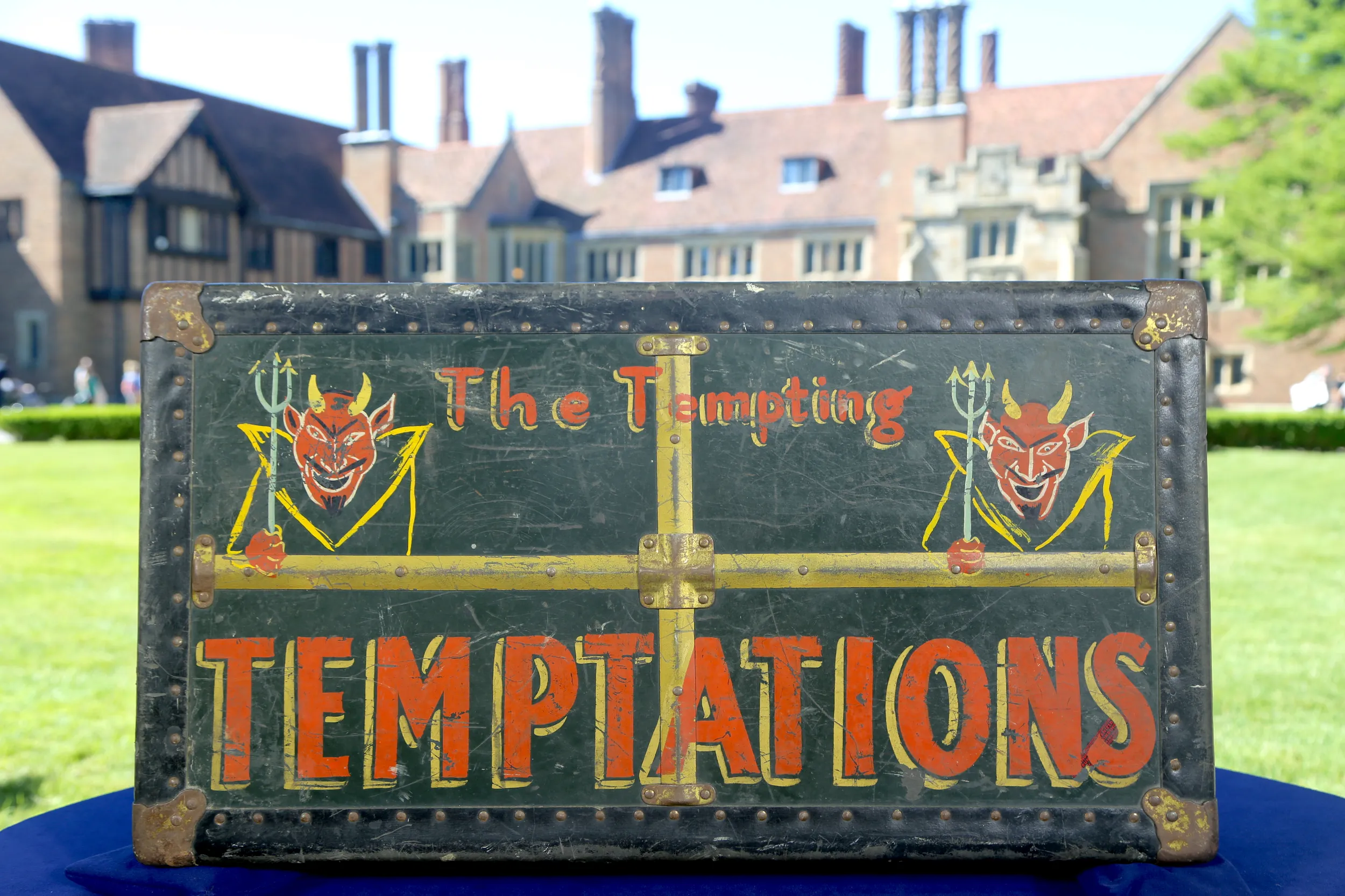
appraisal
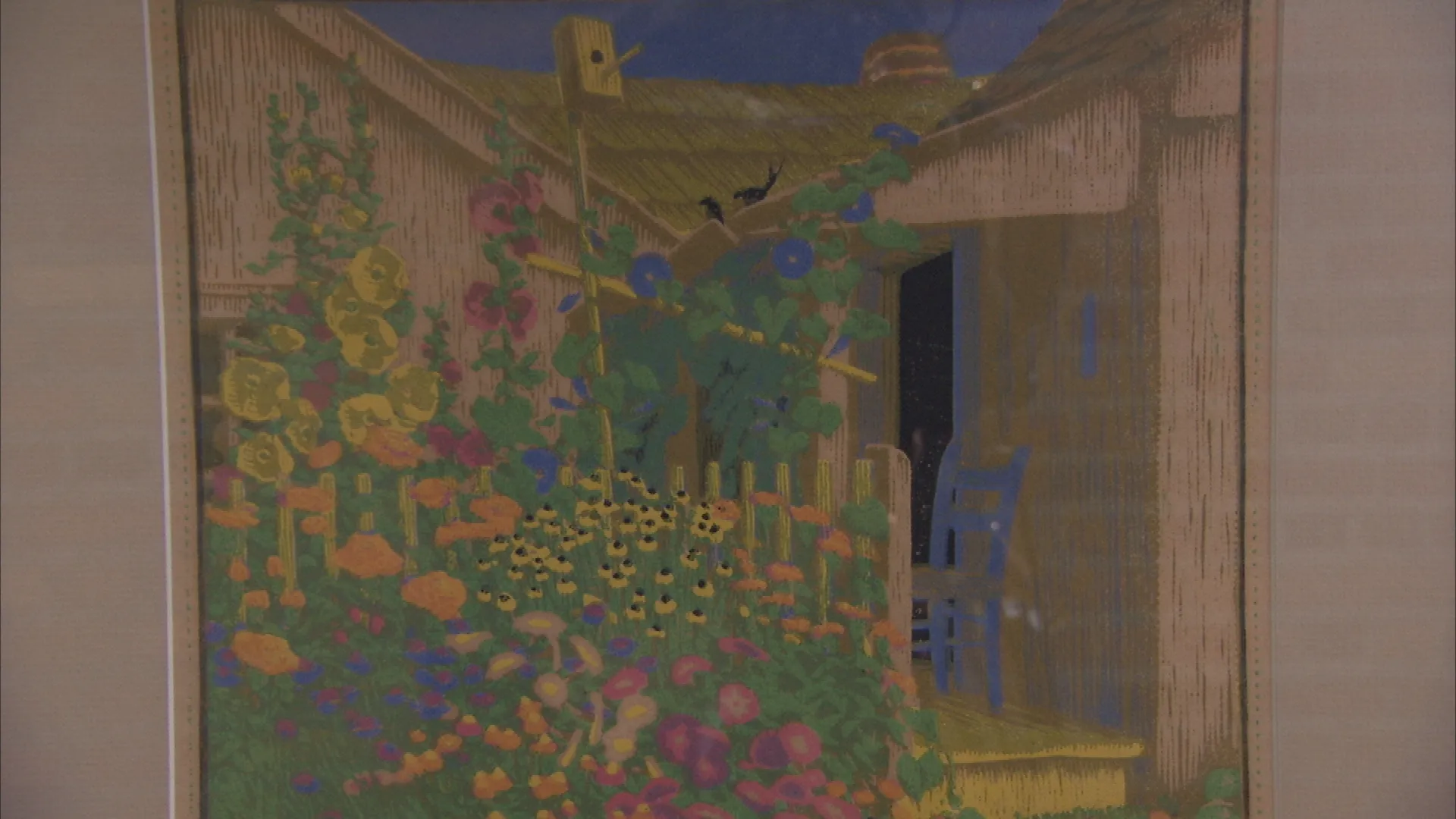
appraisal
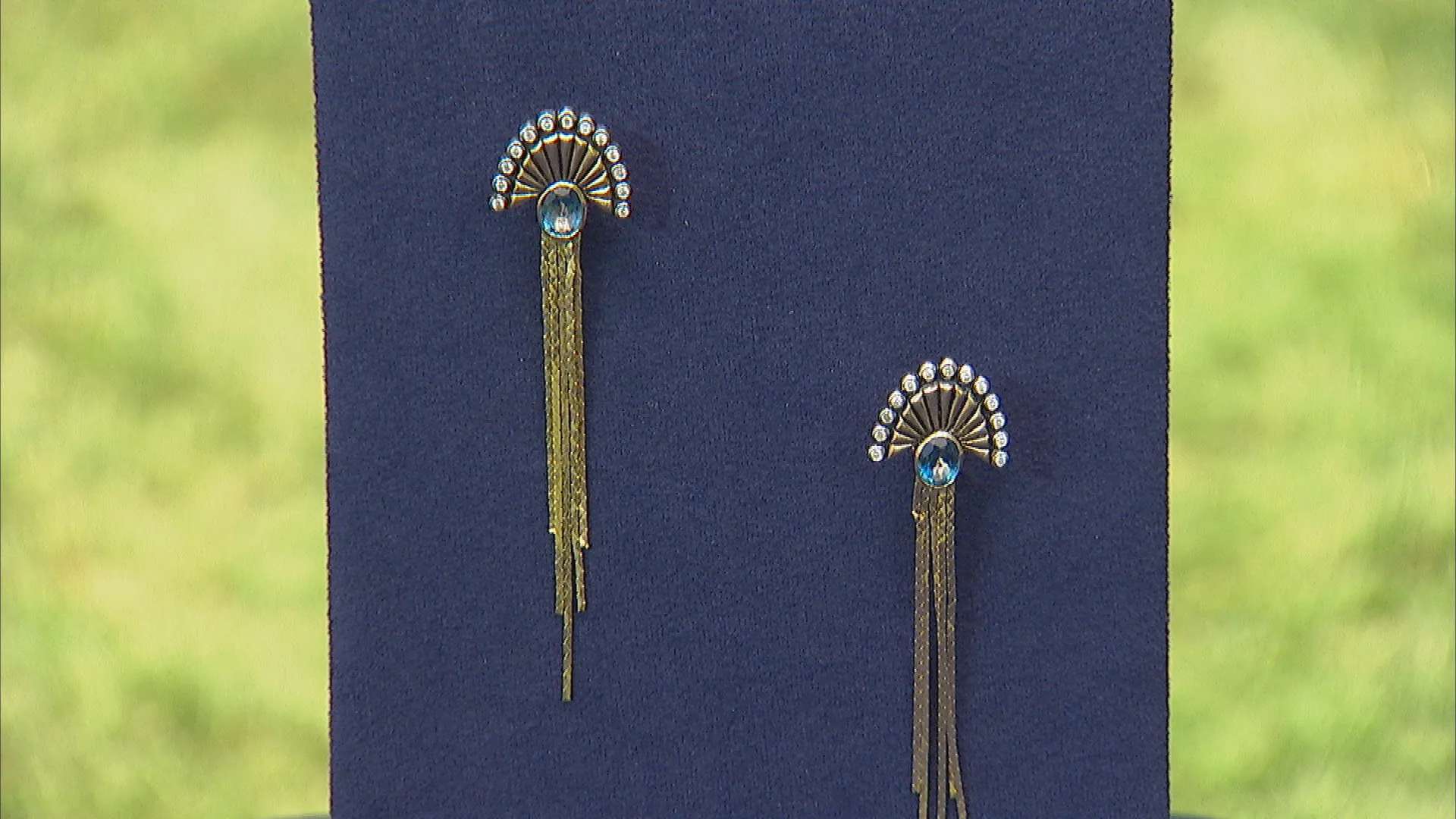
appraisal
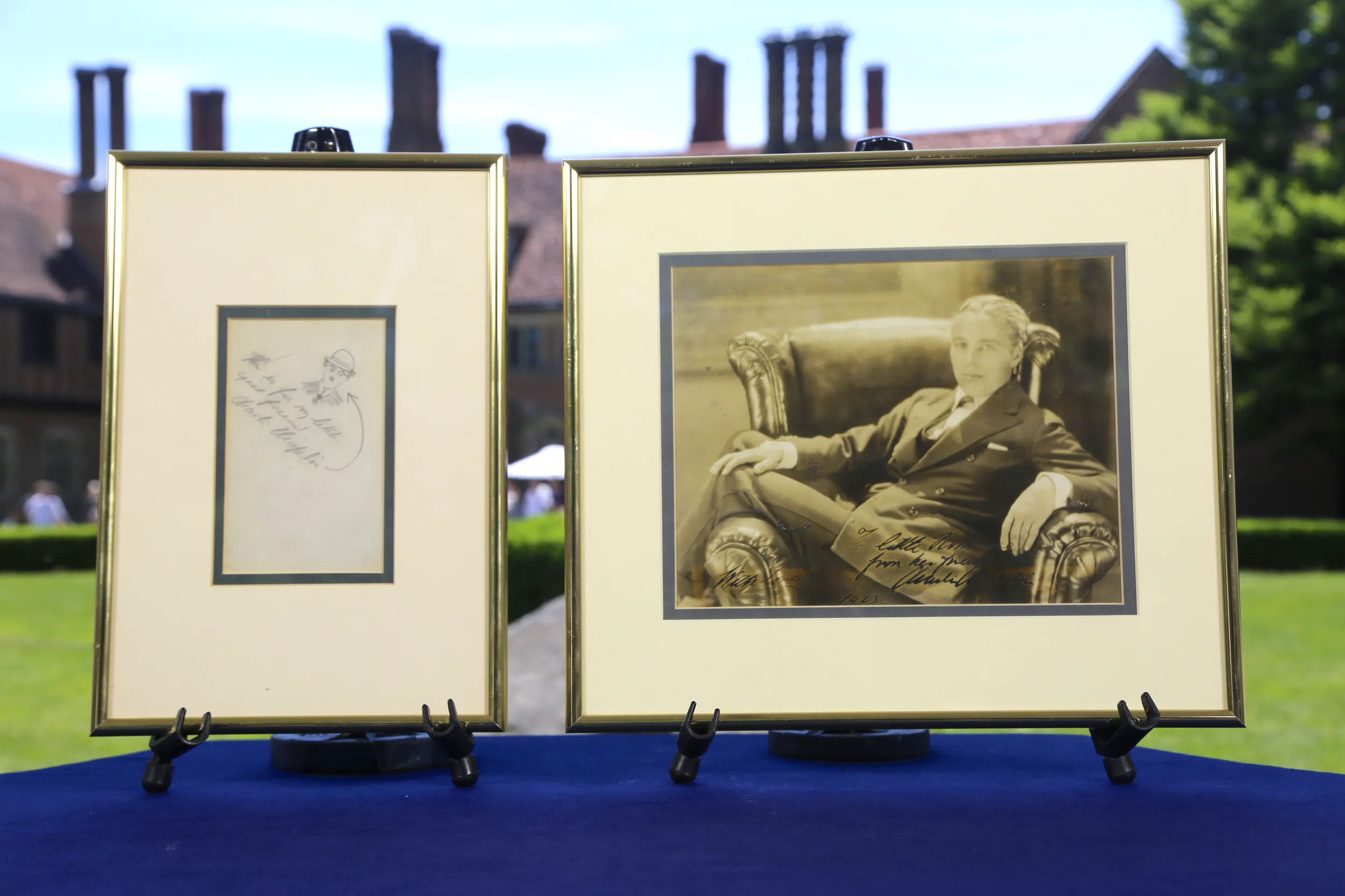
appraisal
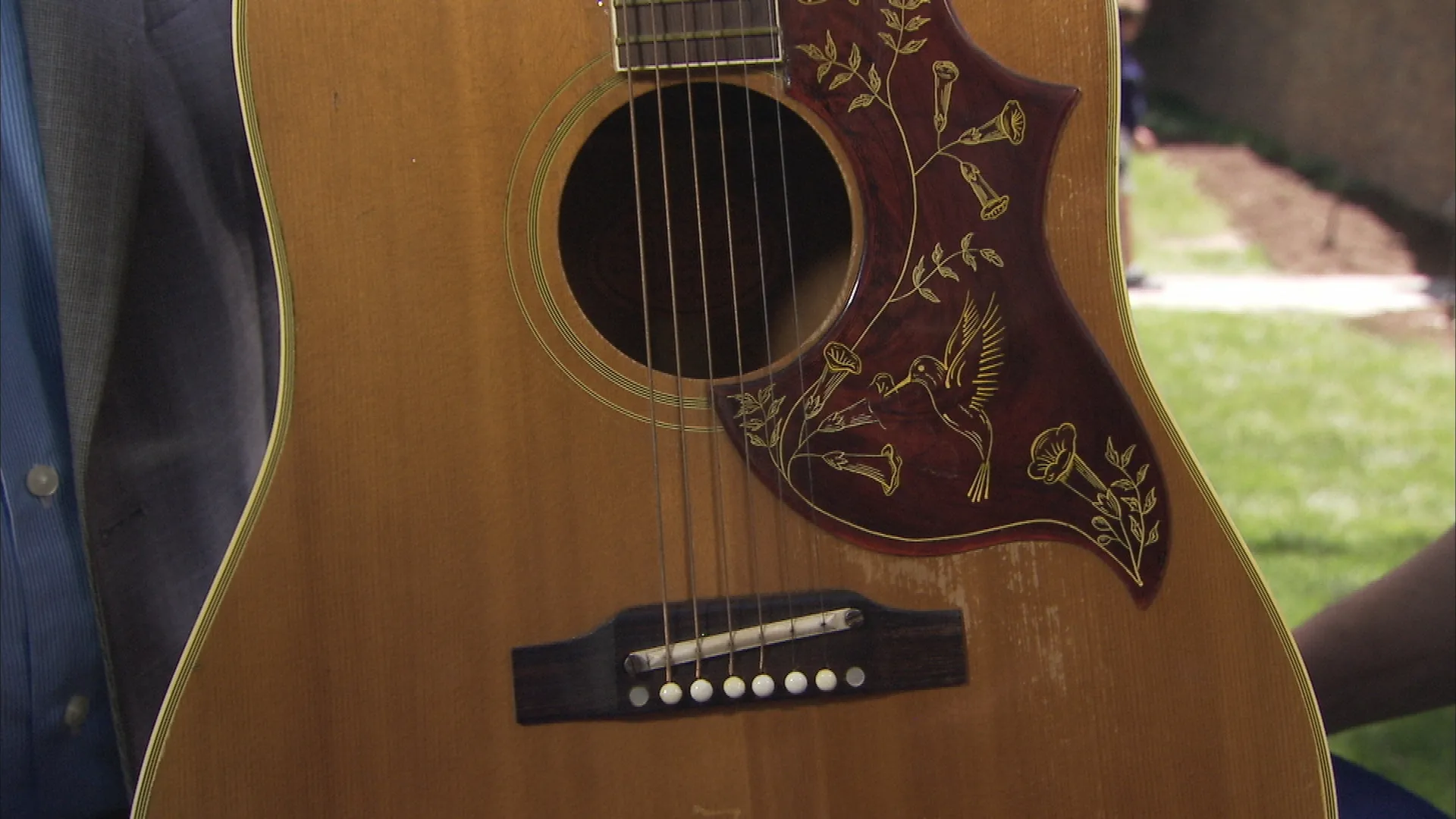
appraisal
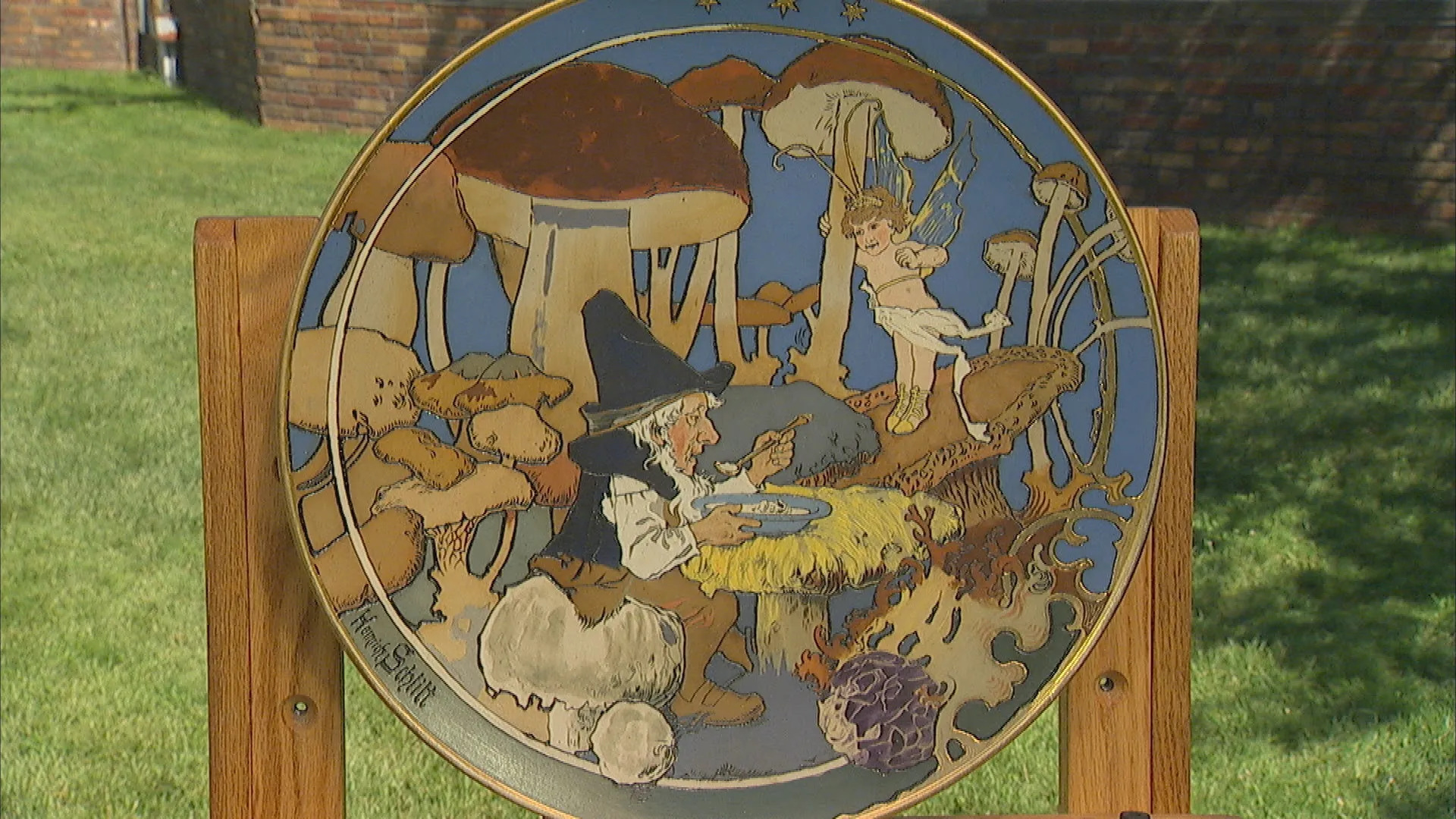
appraisal
appraisal
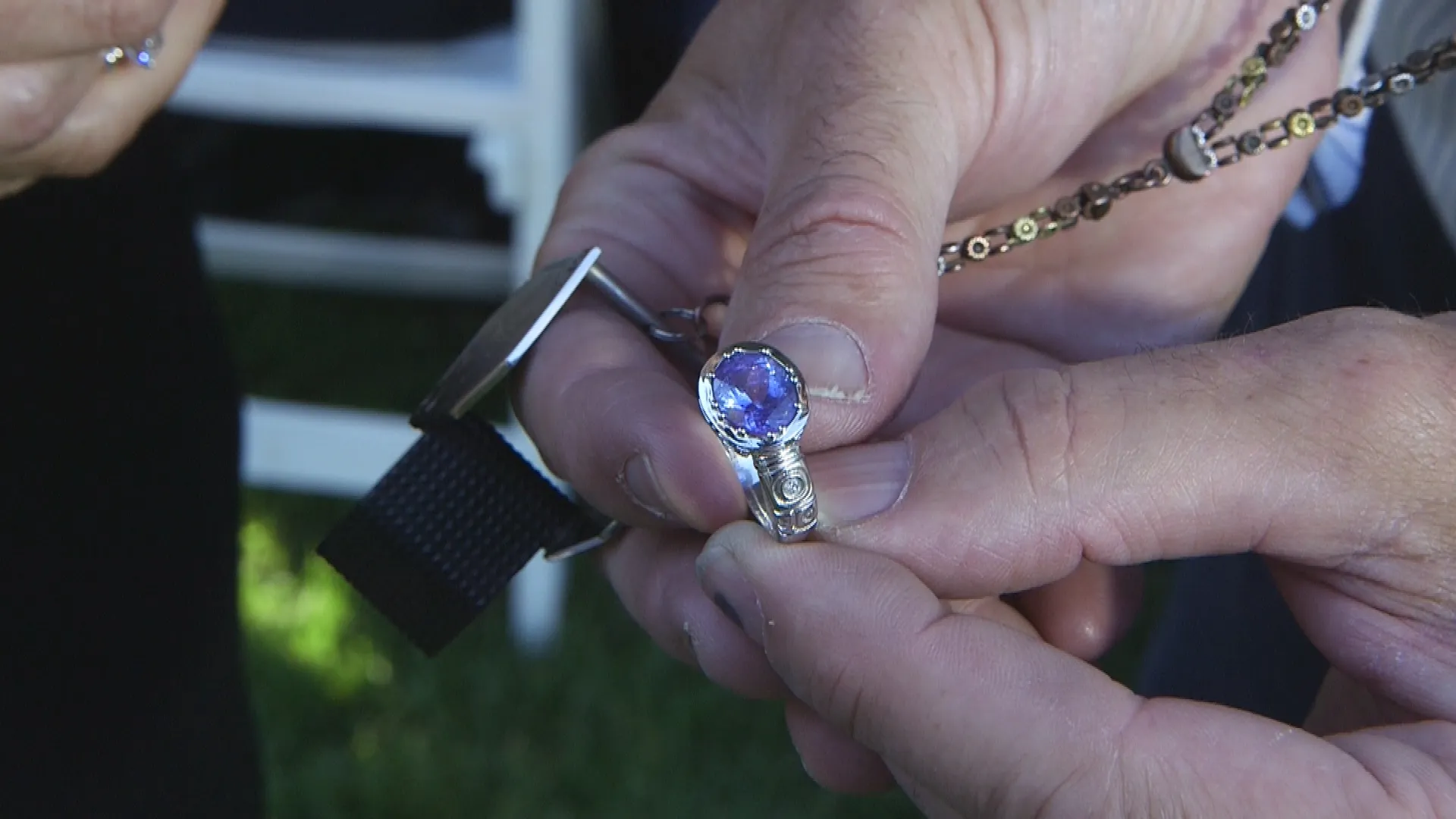
appraisal
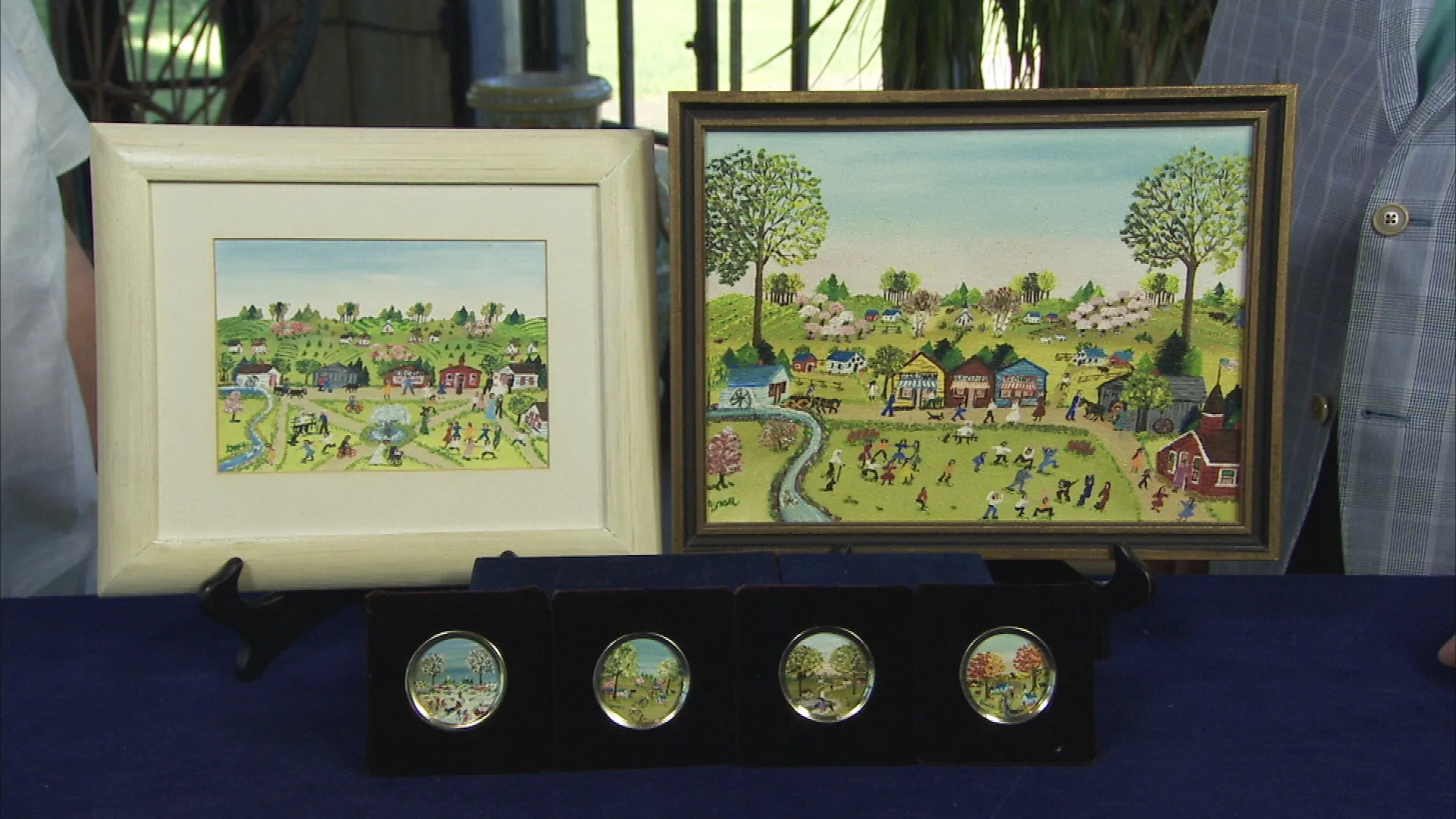
appraisal
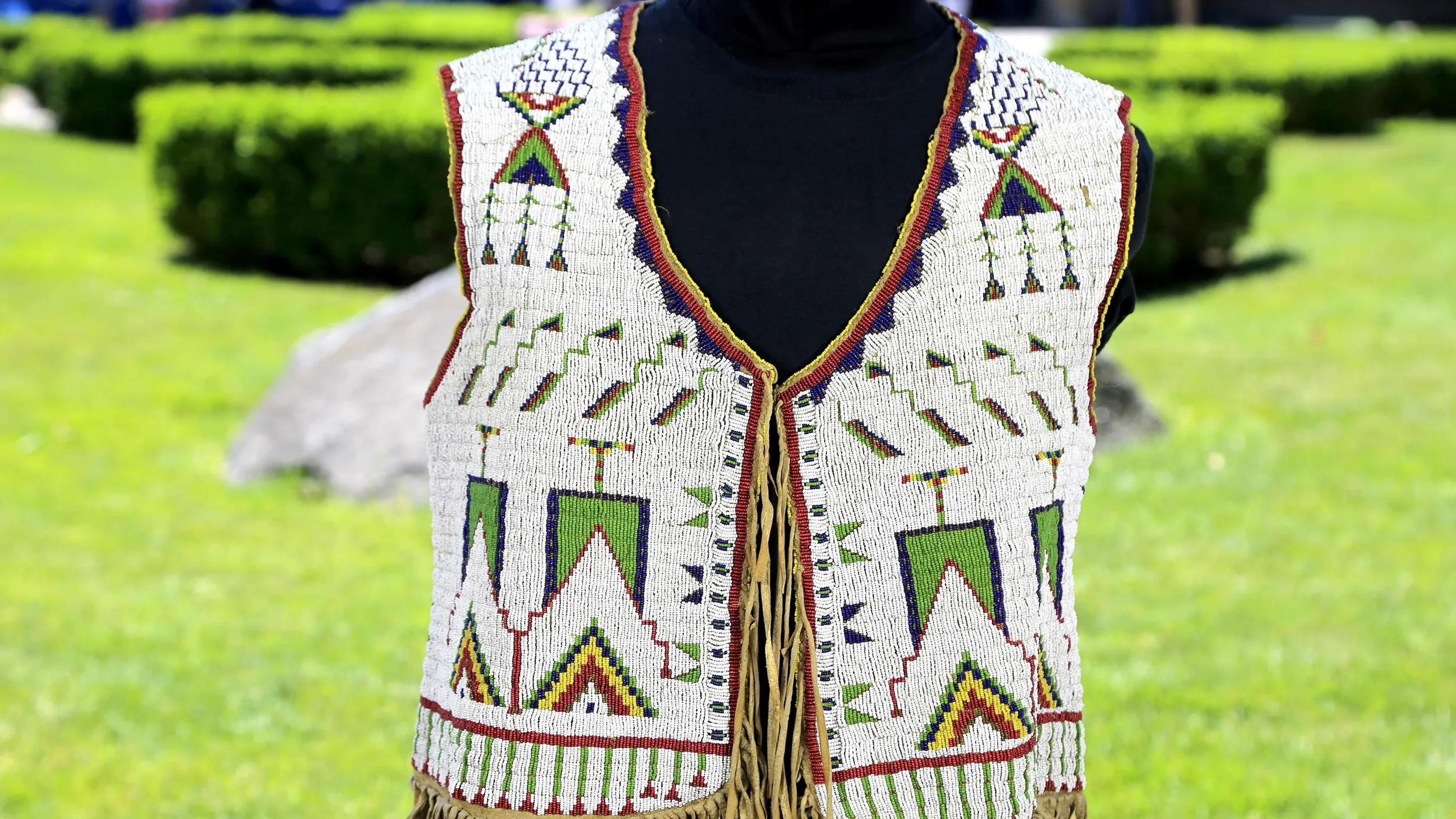
appraisal

appraisal
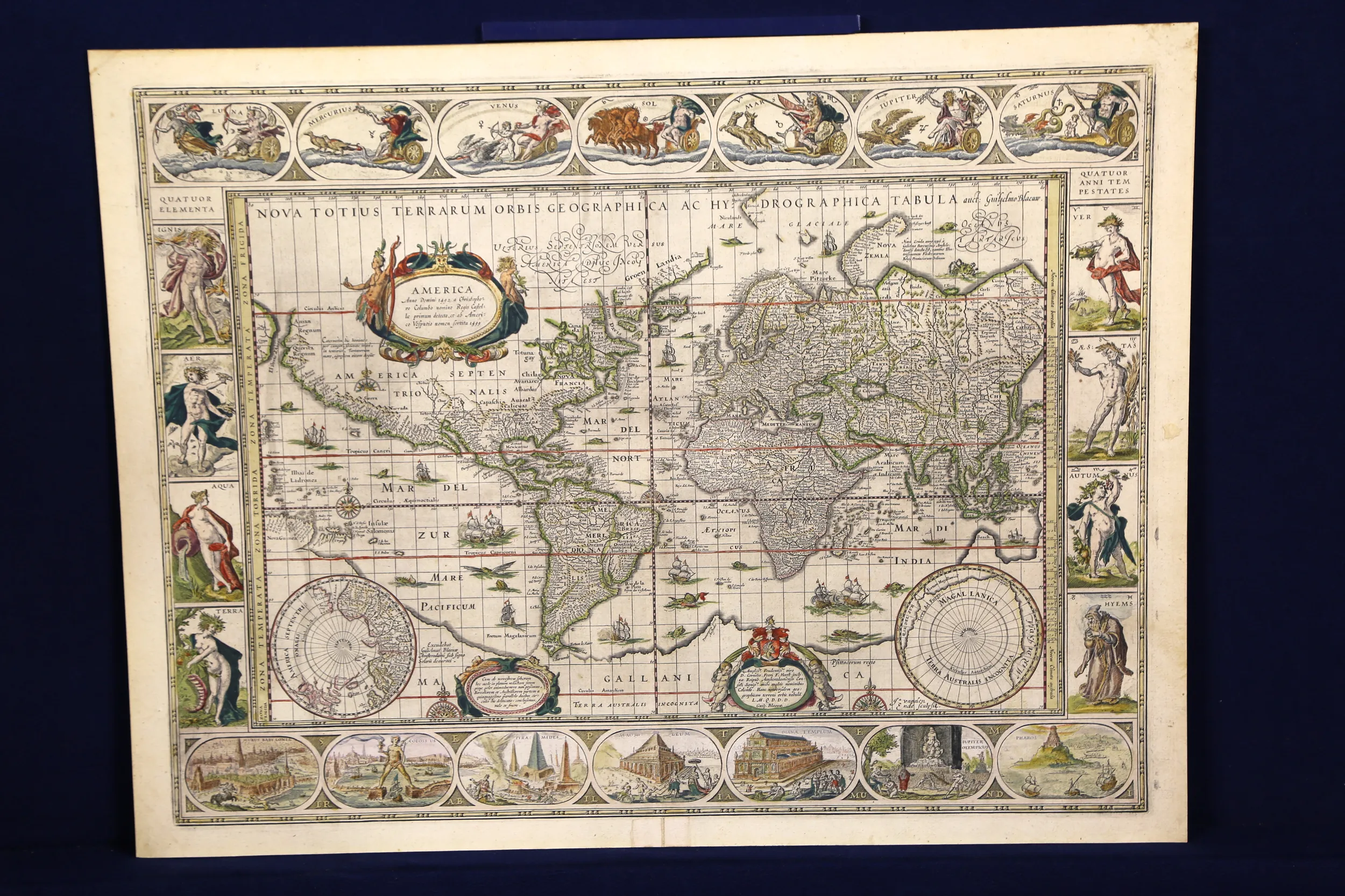
appraisal
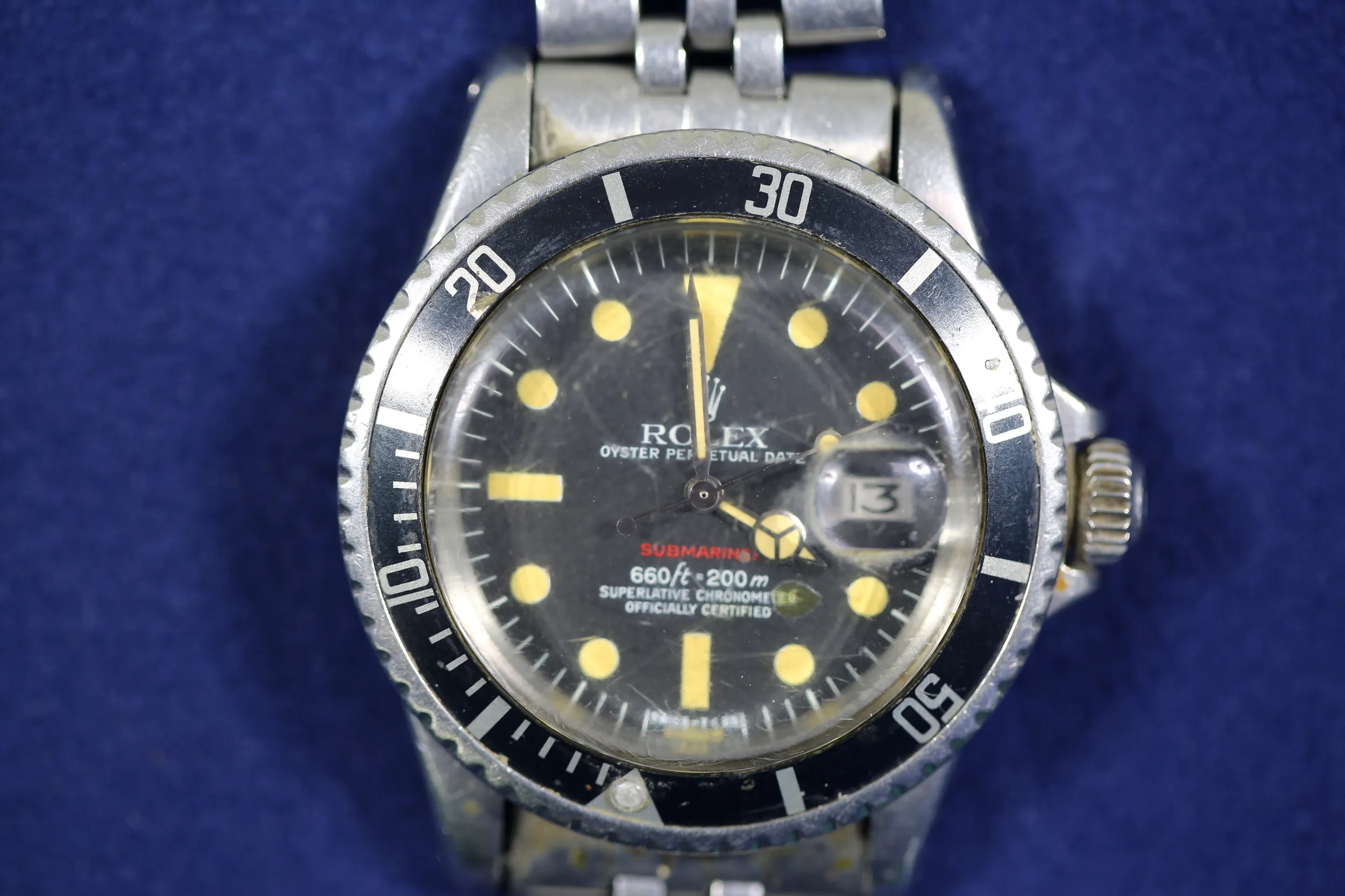
appraisal
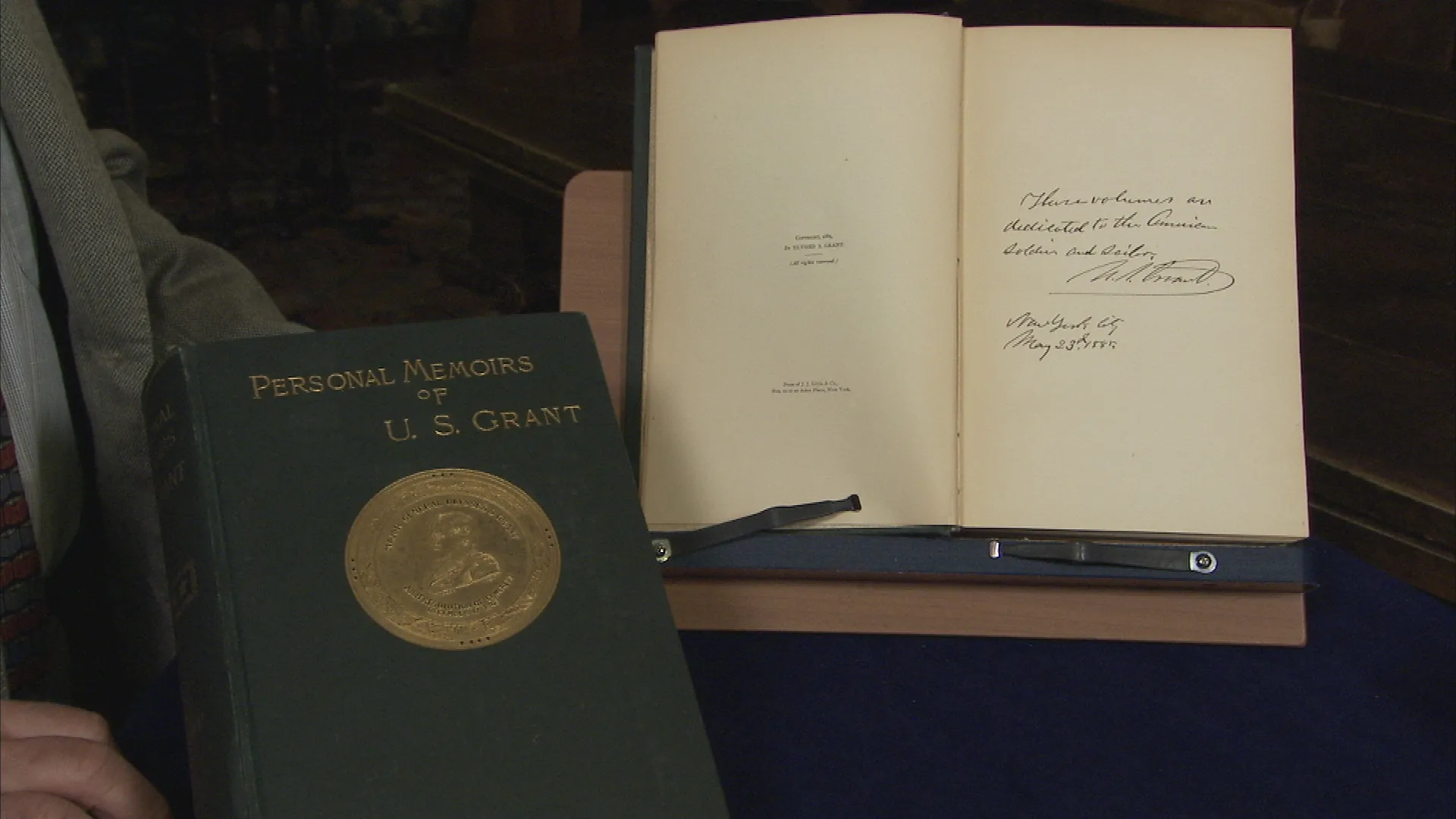
appraisal
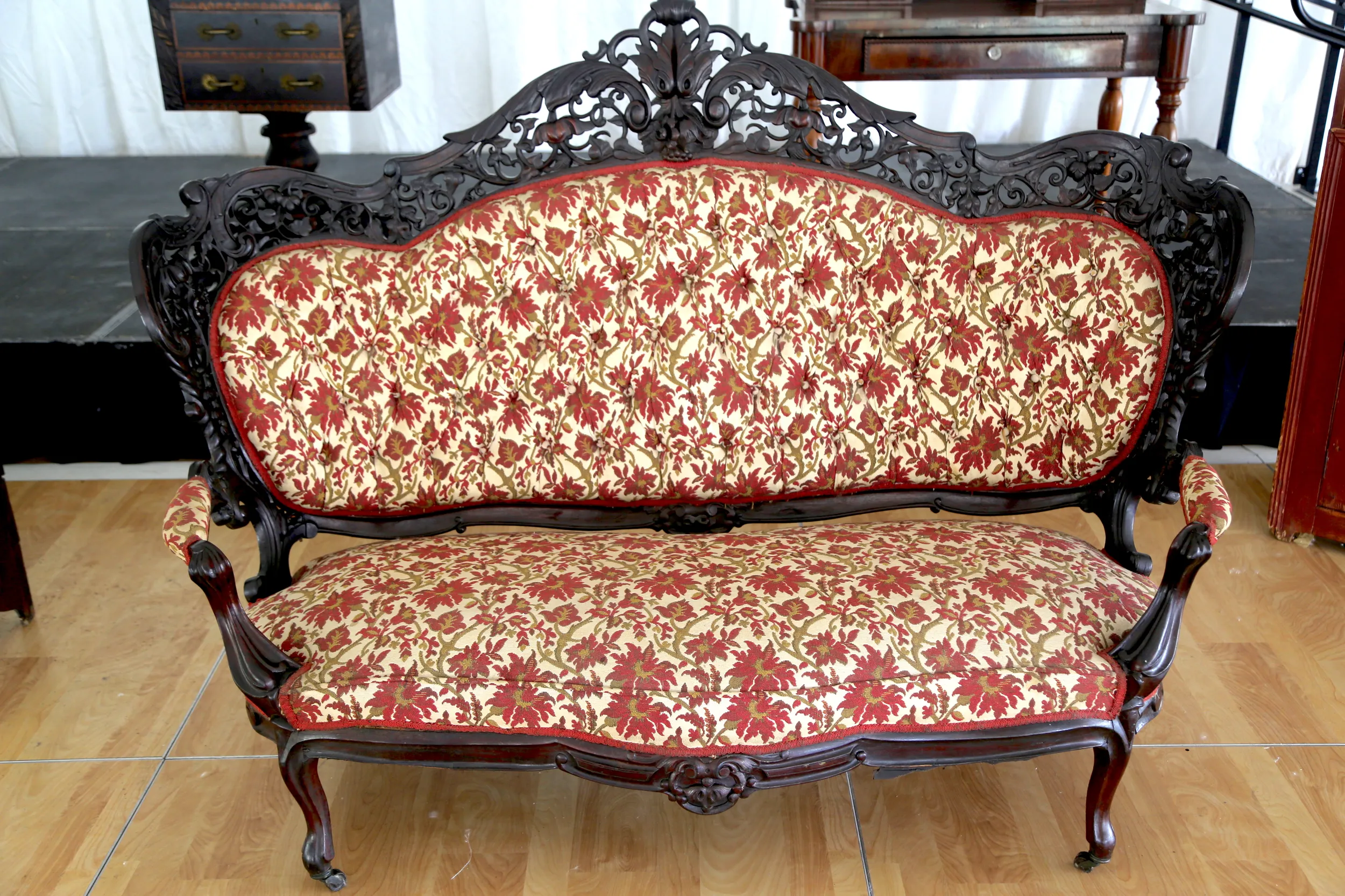
appraisal
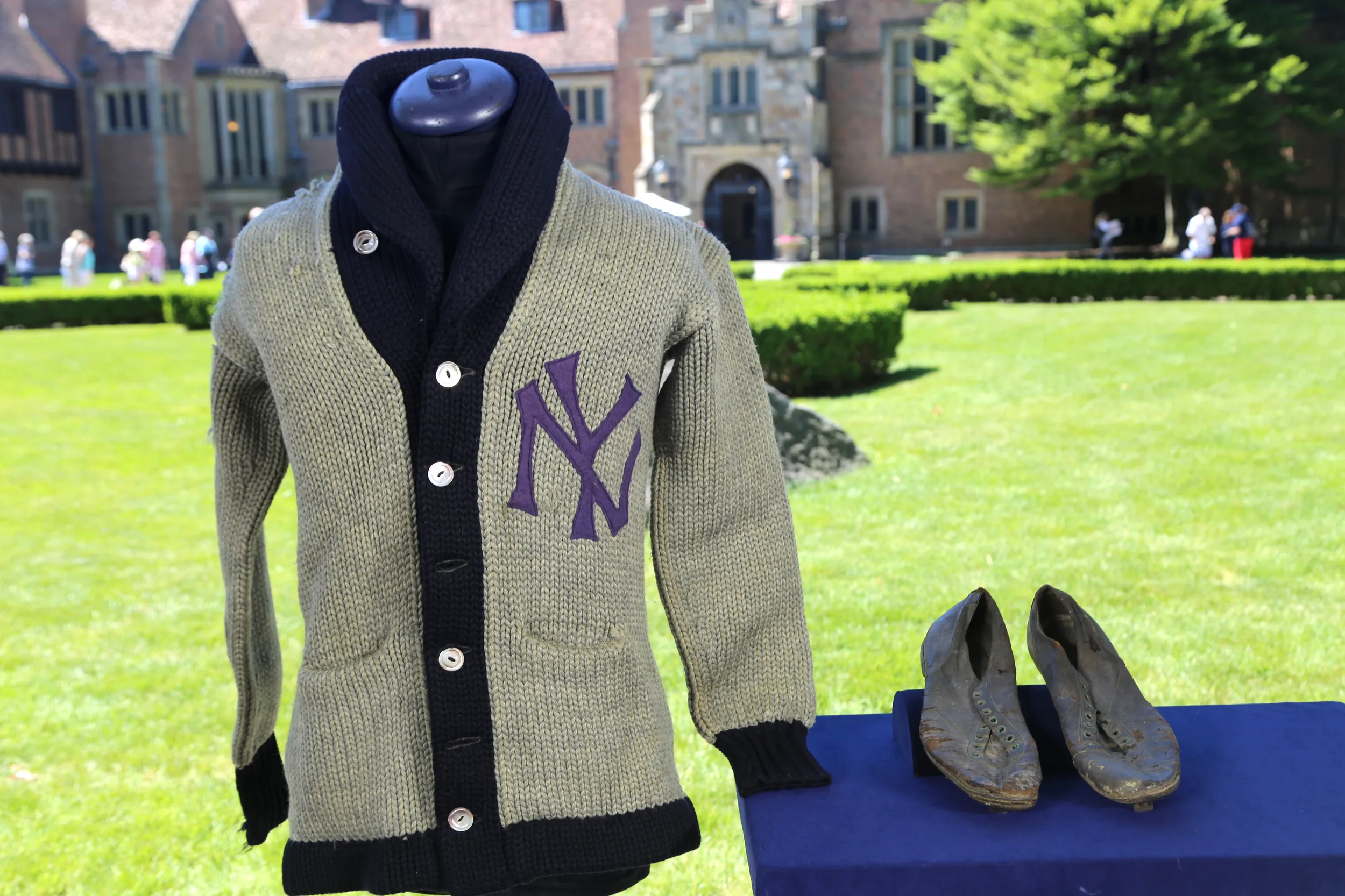
appraisal











Get a sneak peek at photos from all the stops on ROADSHOW's 2018 production tour!
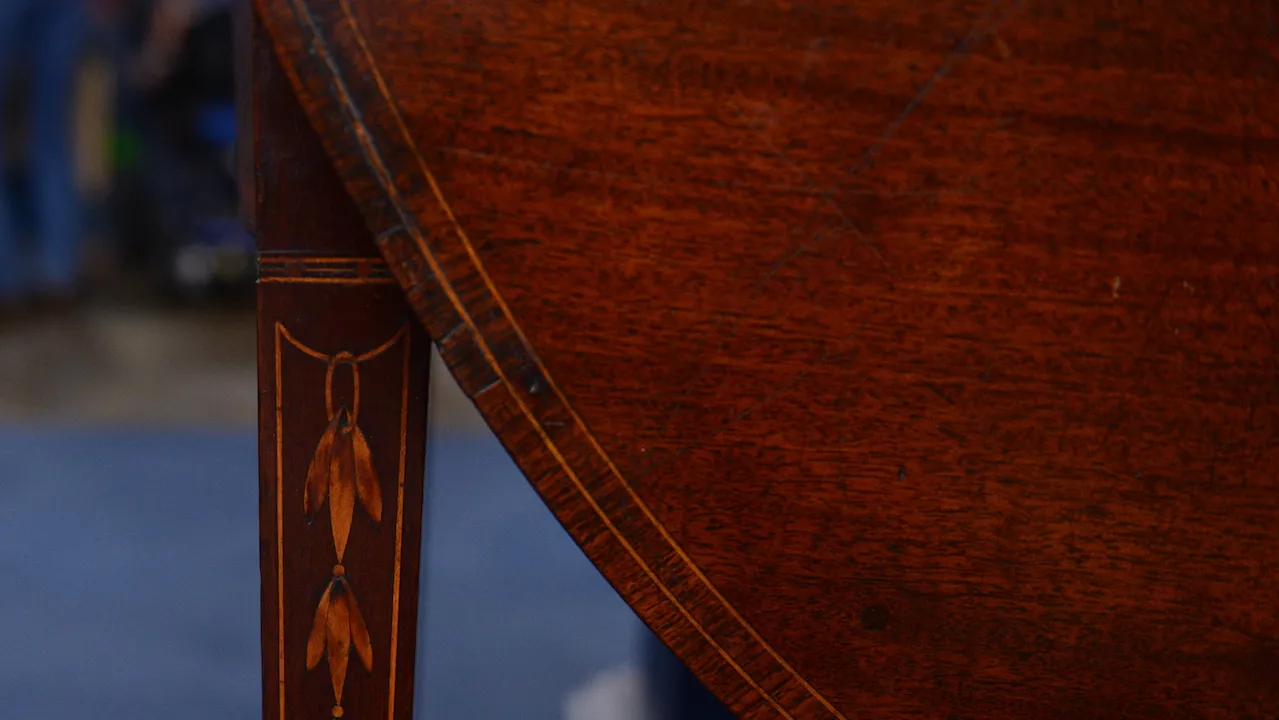
Read the summary that ROADSHOW put together regarding the current regulations governing the import and sale of rosewood.
A weekly collection of previews, videos, articles, interviews, and more!
Funding for ANTIQUES ROADSHOW is provided by Ancestry and American Cruise Lines. Additional funding is provided by public television viewers.
ANTIQUES ROADSHOW is a trademark of the BBC and is produced for PBS by GBH under license from BBC, Worldwide. PBS is a 501(c)(3) not-for-profit organization.
A weekly collection of previews, videos, articles, interviews, and more!
Test your appraisal knowledge in ROADSHOW's new game — Price Range!








